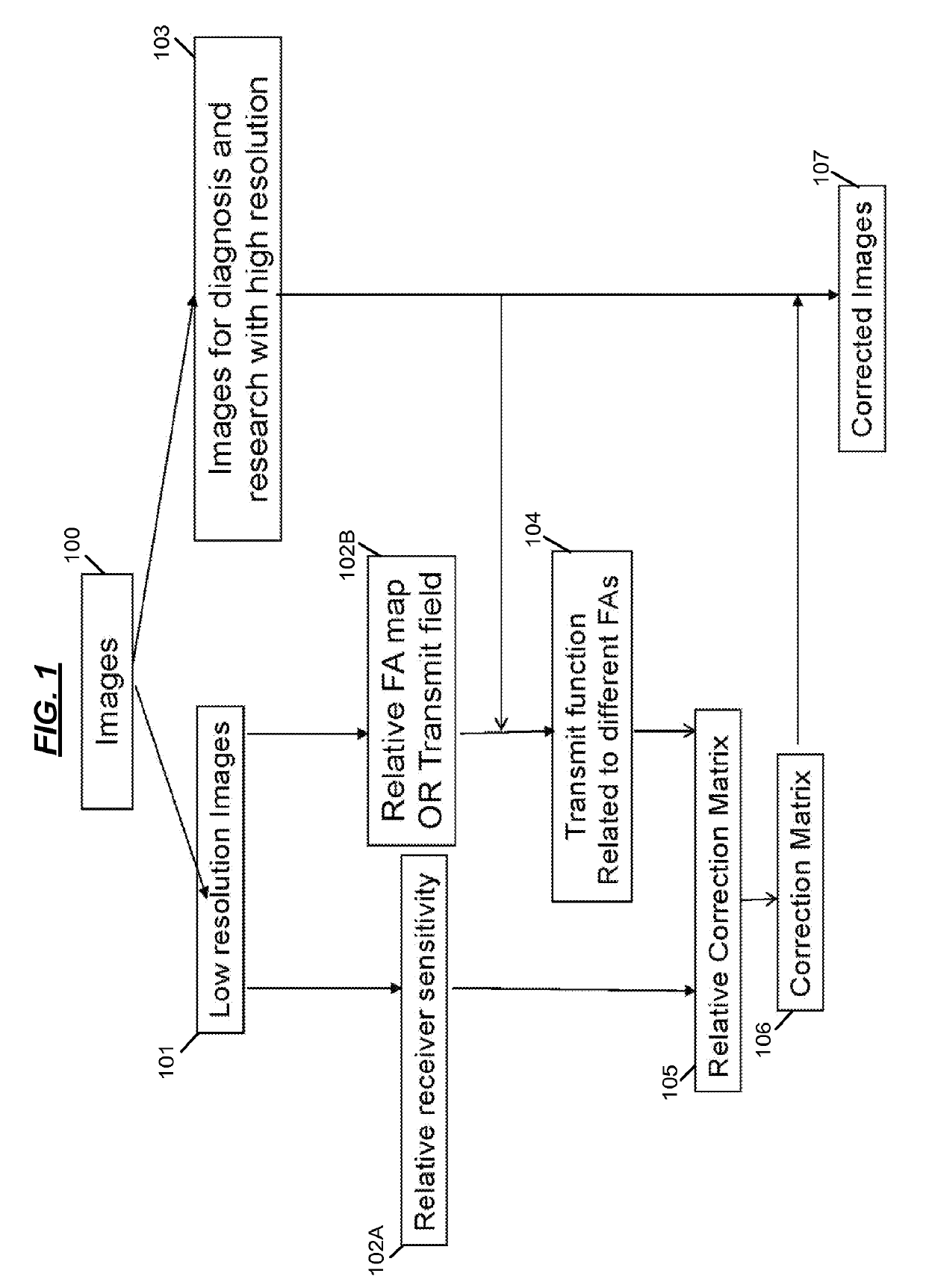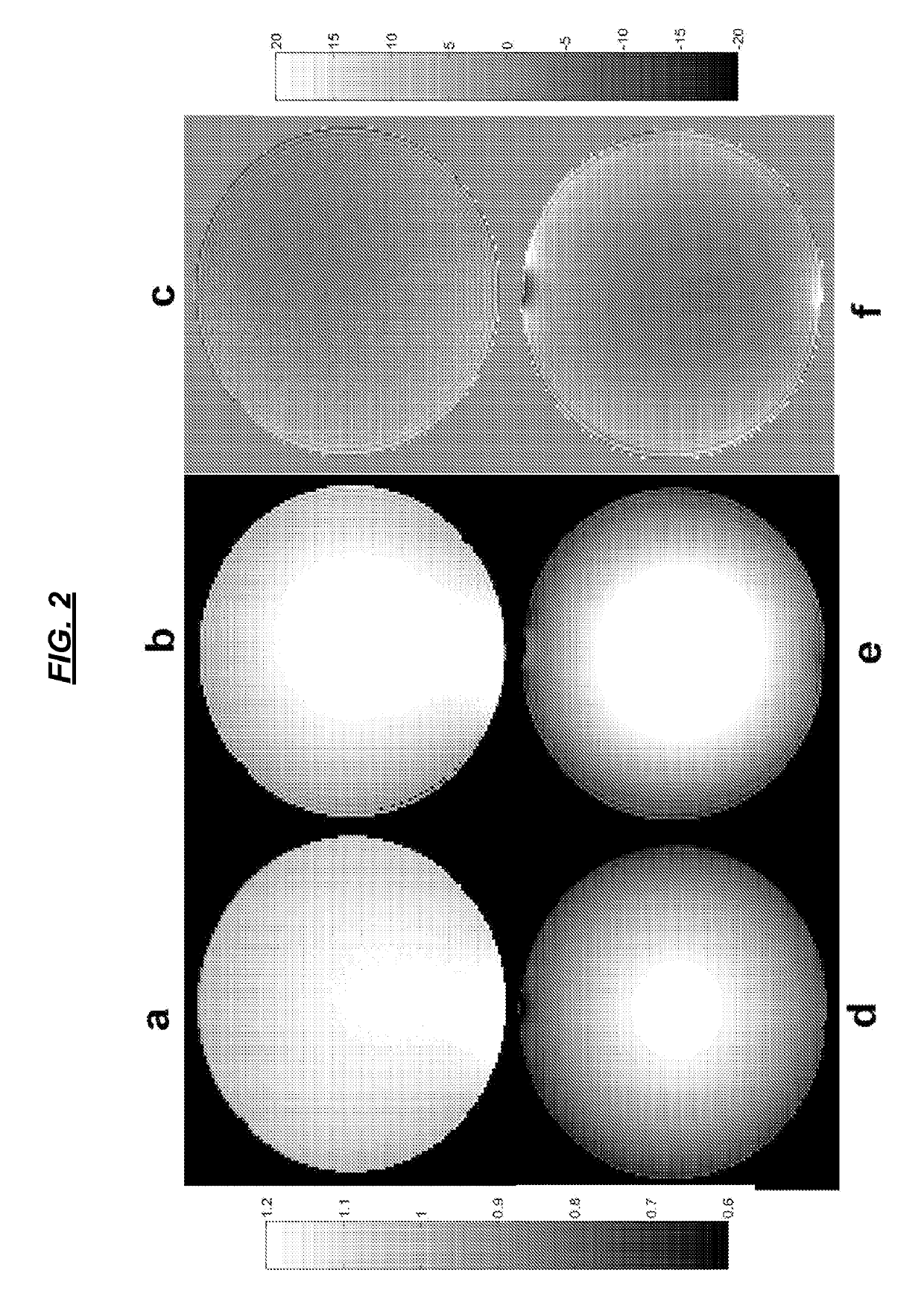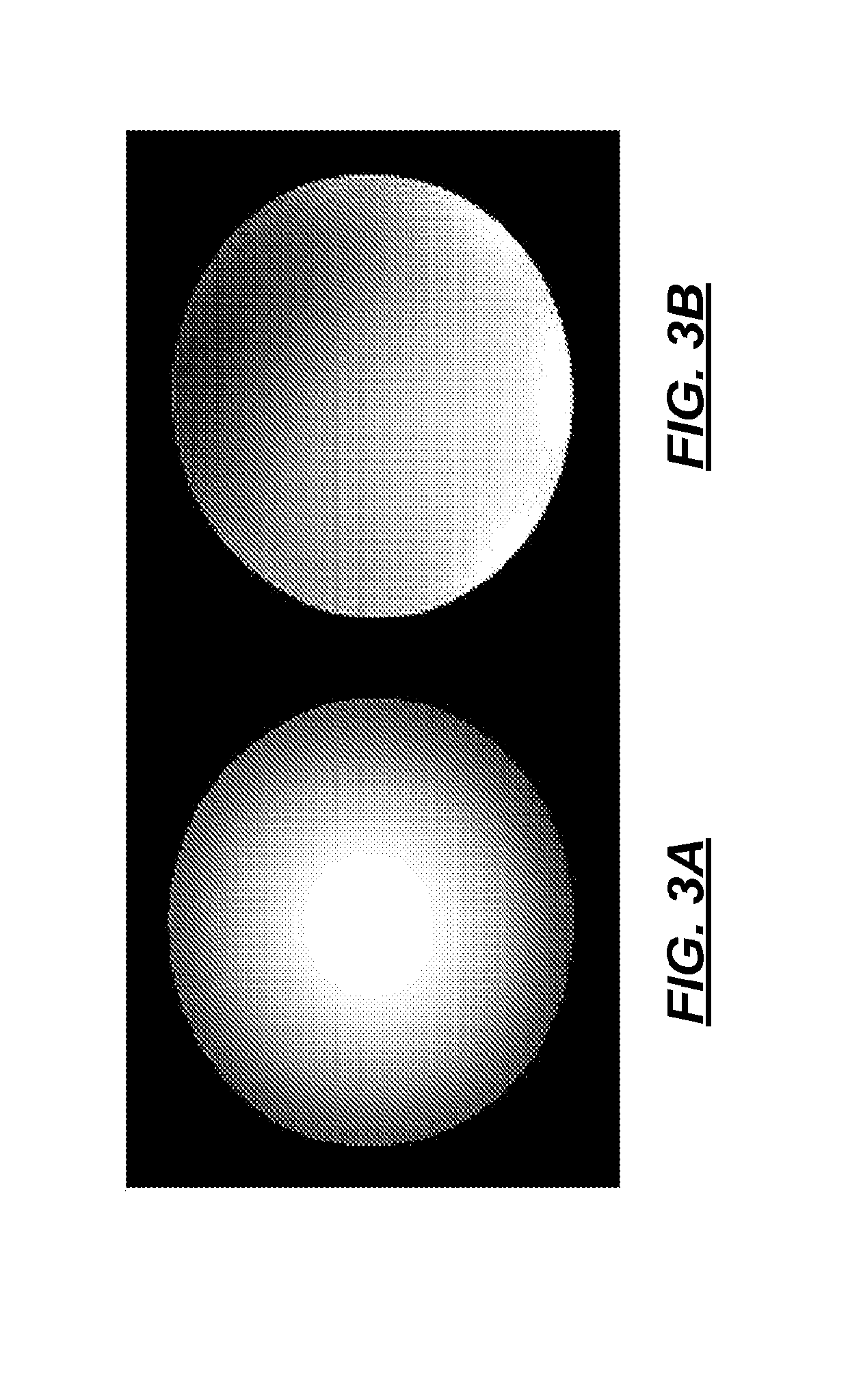Signal inhomogeneity correction and performance evaluation apparatus
a performance evaluation and inhomogeneity correction technology, applied in the field of magnetic resonance (mr) systems and methods, can solve the problems of poor validity scores and inability to direct evaluation, and achieve the effect of improving the detection sensitivity of pathophysiological changes and improving the accuracy and precision of mr imaging
- Summary
- Abstract
- Description
- Claims
- Application Information
AI Technical Summary
Benefits of technology
Problems solved by technology
Method used
Image
Examples
Embodiment Construction
Introduction
[0027]The present disclosure describes methods for correcting image inhomogeneity using a correction matrix of the to-be-corrected images:
SIcorrected=SImeasured / SIcorrection, (1)
Where SICorrected is the corrected signal, signal SImeasured is the measured signal, and SICorrected is the correction matrix of the to-be-corrected images. The correction matrix or bias field can be calculated from transmit function and receiver sensitivity as follows:
SIcorrection=F(x)·S(x), (2)
where F(x) is the corresponding transmit function, and S(x) is receiver sensitivity. The transmit function of the to-be-corrected image F(x) is calculated according to the measured transmit field and Bloch's equation that corresponds to the acquired image.
[0028]1. Single Radiofrequency Pulse
[0029]The simplest MRI radiofrequency pulse only includes a type of radiofrequency pulse shape which can be one of sinc pulse, Gaussian pulse, truncated-sinc, hard pulse, composite pulse and tailored pulse. For a giv...
PUM
 Login to View More
Login to View More Abstract
Description
Claims
Application Information
 Login to View More
Login to View More - R&D
- Intellectual Property
- Life Sciences
- Materials
- Tech Scout
- Unparalleled Data Quality
- Higher Quality Content
- 60% Fewer Hallucinations
Browse by: Latest US Patents, China's latest patents, Technical Efficacy Thesaurus, Application Domain, Technology Topic, Popular Technical Reports.
© 2025 PatSnap. All rights reserved.Legal|Privacy policy|Modern Slavery Act Transparency Statement|Sitemap|About US| Contact US: help@patsnap.com



